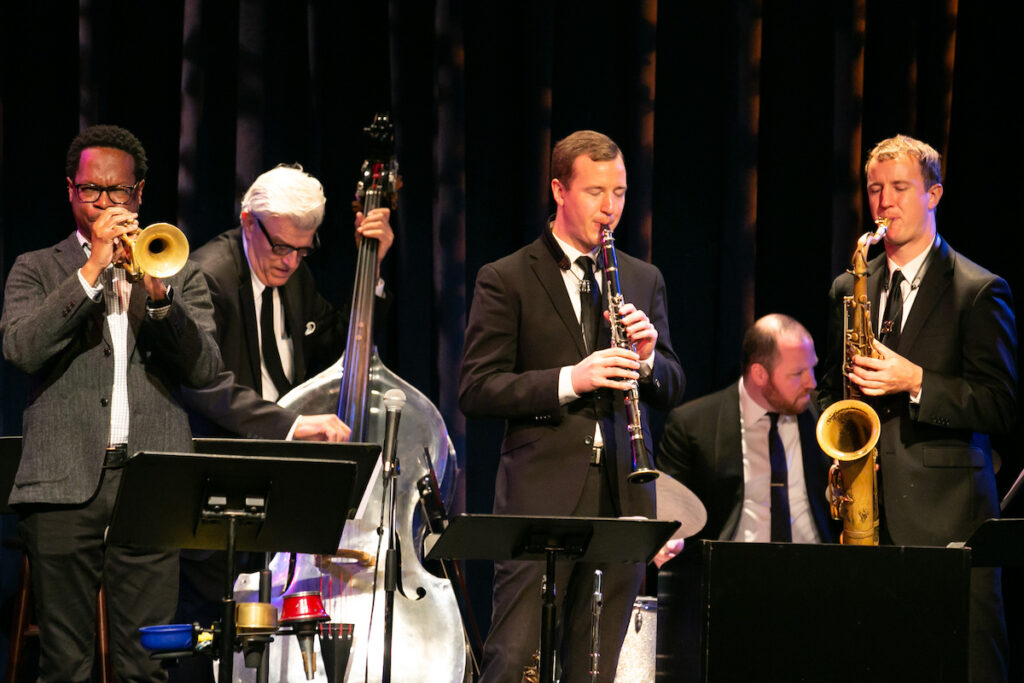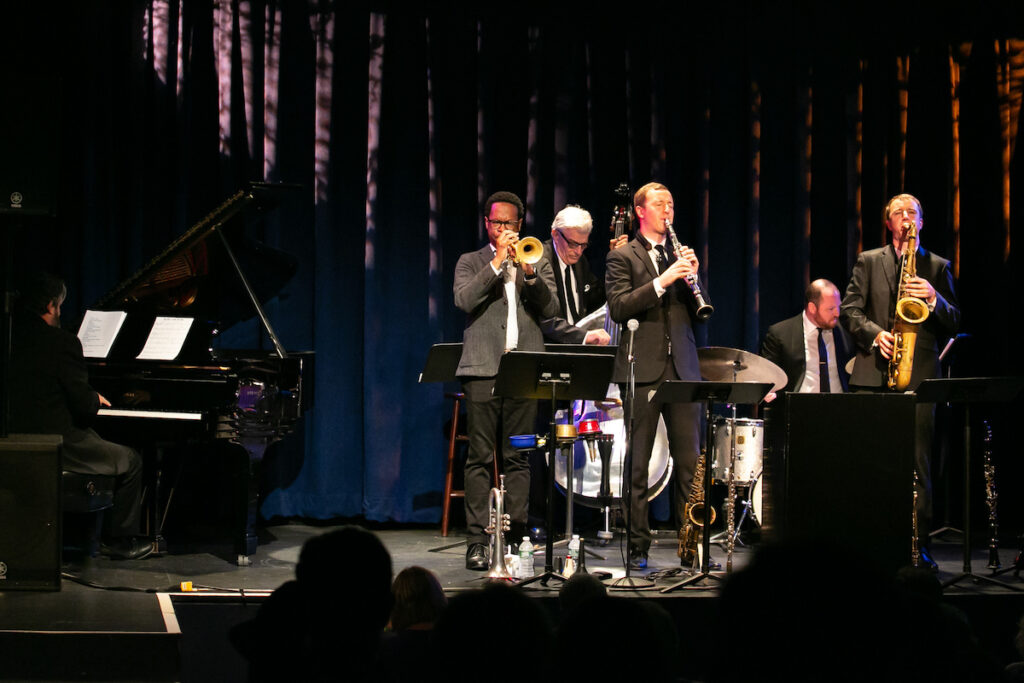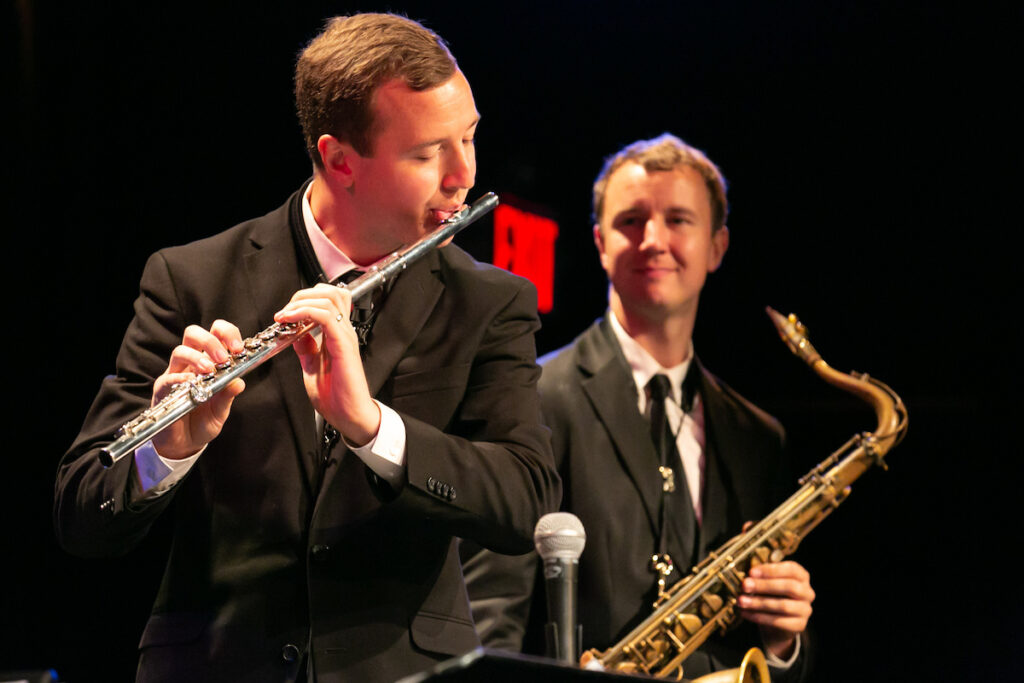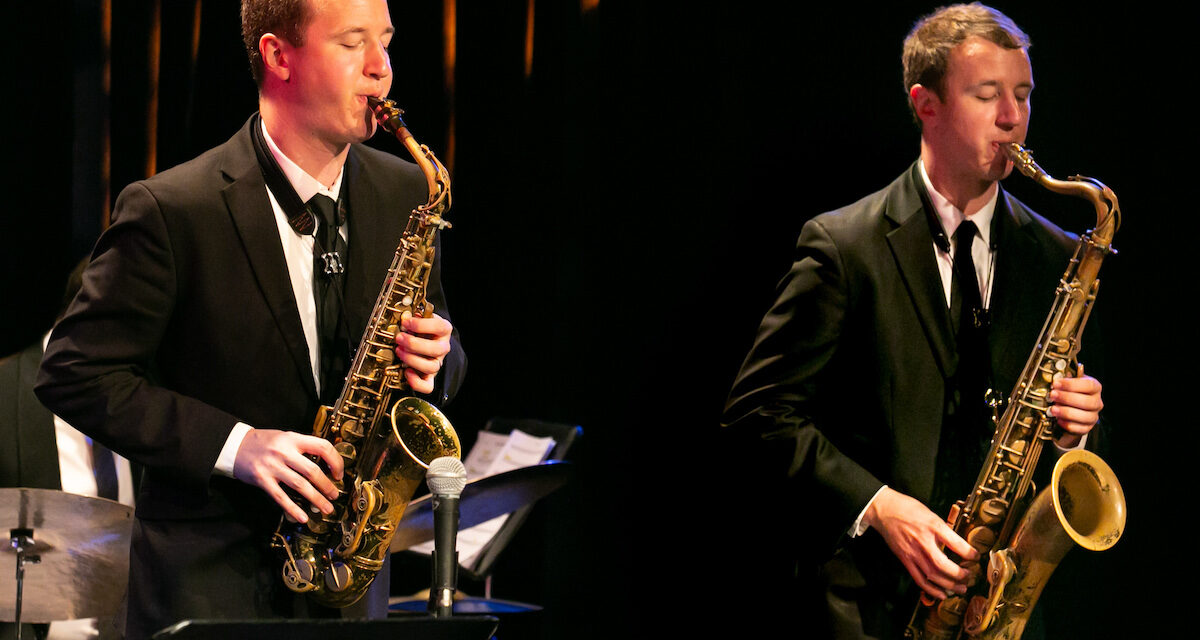By Marilyn Lester . . .
In the mode of the long-established Lyrics and Lyricists series at 92Y, jazz brothers Will and Peter Anderson have offered tribute shows over the last several years, dedicated to an individual composer, complete with visuals and narrative. Their latest outing at Symphony Space’s Leonard Nimoy Thalia Theater on August 13th featured the work of composer, conductor, arranger and pianist Henry Mancini. While not exactly in the milieu of the Andersons—jazz—and falling into the easy-listening category, many of Mancini’s works have jazz elements written into them, and of course, were enhanced by the brother’s own arrangements. The result was a toe-tapping concert of some the most recognizable tunes in the American musical canon.
Because both brothers are multi-instrumentalists in the woodwind department, playing baritone, tenor, alto and soprano saxes, plus clarinet and flute, their mixing and matching added a variety of sound in the presentation of each number. Mood and feeling were informed through this creative instrumentation and via the arrangements. Narrative set-ups also were concisely delivered, wondrously covering the huge scope of Mancini’s life and accomplishments within the time constraints of the show.

Brandon Lee, Vince Giordano, Will Anderson, Alex Raderman, Peter Anderson
Mancini’s work mostly encompassed writing for film and television. For about 25 years his tunes were chart-toppers, with melodies still very familiar to many today. Leading with Mr. Lucky, the title theme from the CBS-TV television series “Mr. Lucky,” which peaked at 20 on the Billboard charts in 1960, the brothers set a swinging tone for the set. Not a charting tune, but one of Mancini’s most jazzy works, released a few years before “Mr. Lucky” was the theme from another TV private eye/crime drama series, “Peter Gunn.” Dotted with humor and stories about Mancini, Will Anderson, delivering the narrative, shared a few personal anecdotes. It turns out that Mancini has long been a favorite of the brothers, and they got a chance to showcase their skills and love of the work by playing the “Peter Gunn” theme at their sixth grade recital. Mancini had composed a suite of music for “Peter Gunn,” among those tunes was “Dreamsville,” deftly played by the brothers later on in the set.


Mancini’s second most popular hit on the Billboard charts (peaking at number 11) was his evergreen, much-covered “Moon River” (lyric by frequent collaborator, Johnny Mercer), played soulfully by pianist Dalton Ridenhour with Peter Anderson on soprano sax. “Moon River “ almost didn’t make the Breakfast at Tiffany’s cut. When the film’s executives moved to eliminate it, leading lady Audrey Hepburn announced “over my dead body.” The rest is history; the tune went on to win the 1961 Academy Award for Best Original Song and a 1962 Grammy for Song of the Year. As for Mancini’s biggest hit, reaching number one on the charts, was the “Love Theme from Romeo and Juliet,” also known as “A Time for Us,” arranged by Mancini from Nino Rota’s music.


One of the best-known tunes written by Mancini, ”The Pink Panther Theme,” for the eponymous 1963 film, was also used in the film’s sequels and again when the Pink Panther cartoon show debuted in 1964, playing on television till the early 1980s. Another whimsical Mancini creation played by the Anderson’s, artfully arranged with Peter on clarinet and Will on flute, was “Theme from Hatari!” Loosely known as the “baby elephant walk” number, the 1962 film was forgettable, but the melody has lingered on.
Featured throughout the concert was bassist Vince Giordano, whose slap style of playing added vintage texture and jazz elements to the set. Brandon Lee’s smooth trumpet also played a key role with fulsome, anchoring brass. Drummer Alex Raderman kept a grooving beat with plenty of nuance from this stick skills. Their many talents of all were showcased in a rousing closer, “Days of Wine and Roses” (lyric by Johnny Mercer). The number began with the lush symphonic style favored by Ridenhour opening up after several bars to a swinging Dixieland jam. The celebratory feel of the piece was a fitting way to close out a concert honoring one of America’s most prolific and popular composer/songwriters.
Photos: Lynn Redmile (LynnRedmile.com)


















